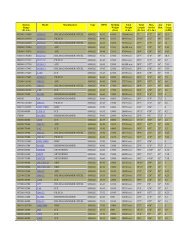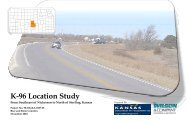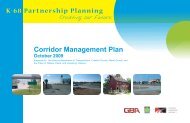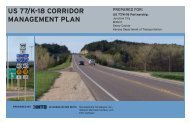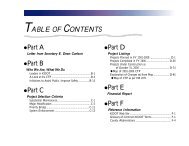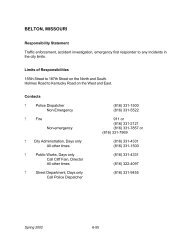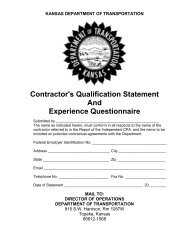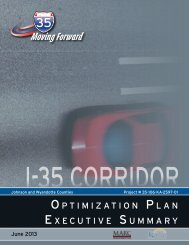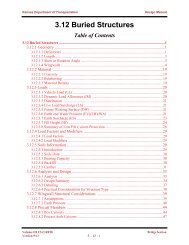KANSAS MOTOR VEHICLE ACCIDENT REPORT CODING MANUAL
KANSAS MOTOR VEHICLE ACCIDENT REPORT CODING MANUAL
KANSAS MOTOR VEHICLE ACCIDENT REPORT CODING MANUAL
Create successful ePaper yourself
Turn your PDF publications into a flip-book with our unique Google optimized e-Paper software.
Special Notes on Traffic Units<br />
Traffic units are mechanically or electrically powered motor vehicles in-transport (not including<br />
personal conveyance devices like electric wheelchairs or sidewalk scooters), all pedestrian types<br />
(See page 10 - Special Notes on Pedestrians), and trains involved with a motor vehicle. A traffic unit<br />
includes all parts of the traffic unit, including towed units or anything transported by the traffic unit. If<br />
parts of the traffic unit or its cargo become detached, it is still considered a part of the traffic unit until<br />
the parts or cargo come to rest (motionless). Motor vehicles in-transport have maneuvers (some of<br />
which are not in motion) and positions in trafficways.<br />
Remember, vehicles stopped in traffic due to normal traffic flow are NOT considered “parked.” Per<br />
federal guidelines, these vehicles are considered “in-transport” and are recorded as normal traffic<br />
units (01, 02, etc.). DO NOT record legally parked vehicles or non-contact vehicles as normal traffic<br />
units (###). Record their information after recording and numbering all regular traffic units involved if<br />
possible. Do not repeat unit numbers for any type of traffic unit. Example of proper coding: 01<br />
(traffic unit #1), N02 (non-contact unit), X03 (legally parked unit). Improper coding would be 01, X01,<br />
and N01.<br />
When completing information on each person involved in the accident, list:<br />
Their association with a traffic unit or as a traffic unit, and code their seat type (position)<br />
Include all passengers whether injured or not (this includes bus passengers)<br />
o Exception: Record train passengers only if they are injured (does not apply to train crew)<br />
Individual’s age and gender<br />
The use of safety equipment and injury severity<br />
EMS transport of each involved person taken to a hospital<br />
For people associated with motor vehicles, indicate whether they are ejected or trapped.<br />
Witness information should be listed in the Narrative (form 851)<br />
Special Notes on Parked Vehicles<br />
The distinction of motor vehicles in-transport eliminates legally parked vehicles; legally parked<br />
vehicles (X-Units: X3) are not “normal” traffic units. Likewise, non-contact vehicles (N-Unit: N2) are<br />
not considered “normal” traffic units because contact is not made with another traffic unit. Legally<br />
parked vehicles may have positions in trafficways, but do NOT have maneuvers. Sometimes<br />
there is confusion concerning how to record legally or illegally parked vehicles involved in accidents.<br />
Please use the follow as a guide:<br />
ILLEGALLY PARKED (Normal Traffic Unit...01, 02, etc)<br />
A part or all of the vehicle is in the driving lanes (unless on-street parking allows such)<br />
Examples: door open in driving lanes, cargo in driving lanes, car running in driving lanes, nonemergency<br />
vehicle providing assistance in driving lanes, attached trailer in driving lanes, etc.<br />
Disabled vehicles in driving lanes are considered illegally parked.<br />
LEGALLY PARKED (X Unit...X2, X3, etc)<br />
No part of the vehicle is in the driving lanes (unless on-street parking allows such)<br />
Transport vehicle parked in roadway unloading cargo<br />
Emergency vehicle parked with emergency lights on (police, tow, fire, ambulance, etc)<br />
Construction / utility vehicle parked with caution lights on and/or cones and signs<br />
Note: Injured occupants of legally parked vehicles are PED Type 25 & recorded on 854 form.<br />
9



